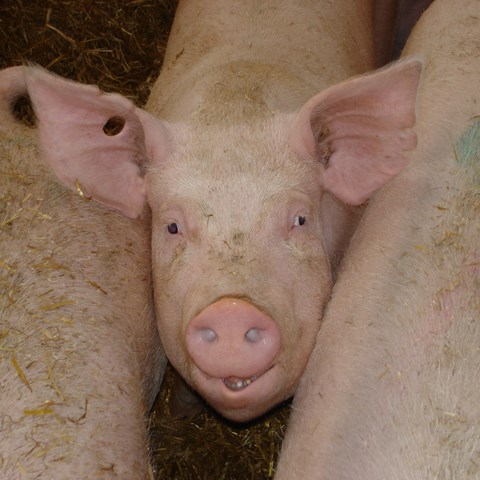Contact
Qasim Mashood, PhD student
qasim.mashood@slu.se

Pork is very popular among Swedish consumers, when the quality is uniform
Pork is still most preferred type of meat that Swedish citizens consume, both in form of fresh and processed meat. Thus, a consistent meat quality is very important. In recent years, the occurrence of meat quality problem called PSE-like zones increase across the entire pork industry and results in destruction of carcass’s most valuable cuts like chops and hams. The undesirable PSE condition in meat is characterized as pale colour, soft texture and excessive exudation.
Classic PSE
So called classic PSE develops in some pigs due to the fact that before slaughter pigs has been in a condition called Malignant hyperthermia, or porcine stress syndrome (PSS). The root cause is linked to high stress sensitivity due to presence of unfavourable genes subjected to intense genetic selection i.e. Halothane gene and RN- gene. In relation to classic PSE, there is still lack of scientific knowledge that can explain the underlying causes for the development of new meat quality problem “PSE like zones” and also lack of scientific basis for the problem to be eliminated. Results from a previous pilot study indicated absence of above mentioned genes in Swedish commercial pig breeds.
Big risk that Swedish pigs produce PSE-like zones meat – Negatively affects profitability at all levels
The problem of PSE-like zones is something that seems to affect all pigs at slaughter. On the carcasses that develop this quality problem, the slaughter yield and the quality of the products deteriorate, which in turn negatively affects the profitability of the entire chain; for producers as well as slaughterhouses and sausage companies.
The project's specific goals are to
The work will be carried out as three sub- studies
The project consists of three sub-studies that will contribute important scientific information to gain an understanding of the root causes of carcasses from certain animals developing meat with PSE-like zones. In the first sub-study, we will carry out systematic mapping of the slaughter process from farm to carcass in relation to the occurrence of carcasses with PSE-like zones. In the second part of the study, we will characterize in detail the effect of PSE-like zones on the structure of the muscle and the quality characteristics of the meat. In the third part of the study, we will examine muscle samples molecularly to see if new candidate genes or genetic markers can be linked to the problem.
Qasim Mashood, PhD student
qasim.mashood@slu.se